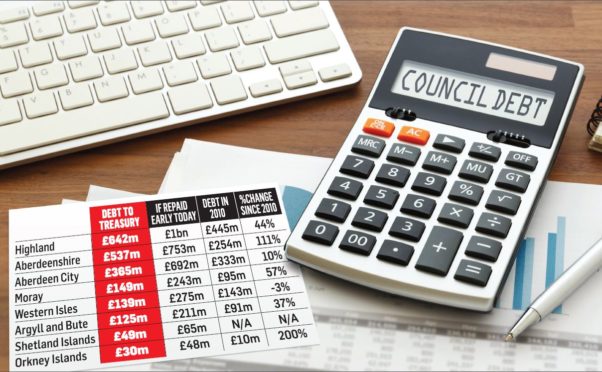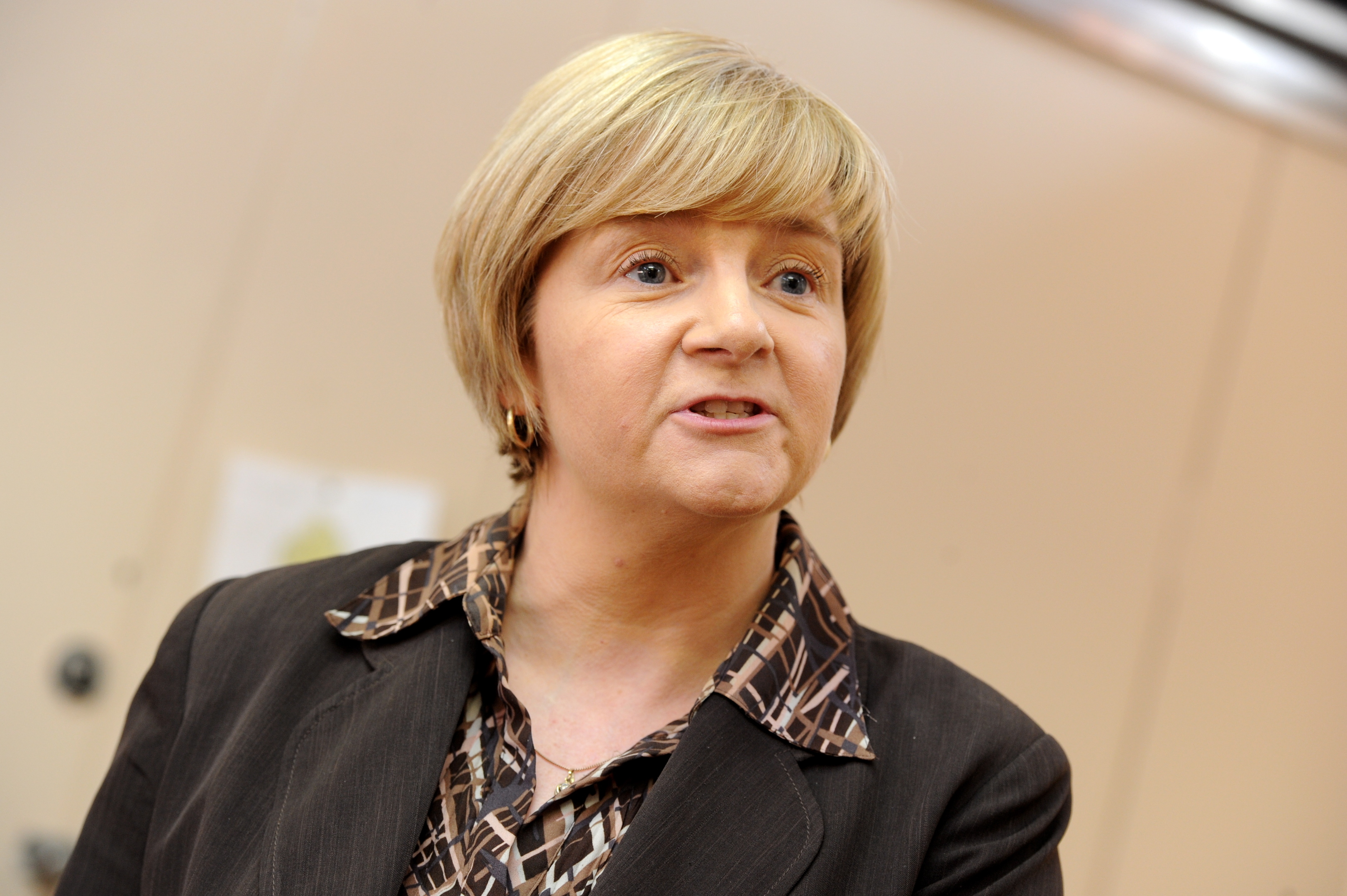Councils in the north and north-east are now in billions of pounds of debt – with the amount owed to the Treasury soaring by almost 50% in less than a decade.
New figures show that the eight councils in northern Scotland have committed to paying back more than £2billion as a result of borrowing from the UK Government’s Public Works Loan Board (PWLB).
And it would cost the authorities almost £3.3bn if they decided to try to repay the full amount today.

Highland Council has the fourth highest debt to the PWLB in Scotland, at £642million, behind only South Lanarkshire, Edinburgh and Glasgow.
Meanwhile, Aberdeenshire’s debt to the Treasury has more than doubled since 2010, and Orkney Islands Council’s has trebled, although it still has the lowest in Scotland.
Total debt levels, including borrowing from other sources and historic PFI/PPP contracts, will be significantly higher for many councils.
Highland Council said its total debt a year ago was £938m, plus another £157m in long-term liabilities arising from PFI/PPP contracts and finance leases.
Similarly, last month Aberdeen City Council’s balance sheet showed its long-term liabilities stood at more than £1bn, before pension liabilities were included.
Loans are a key tool for local authorities, and are used to invest in capital projects such as new schools, leisure facilities, flood defences and road infrastructure.
Aberdeen City Council has budgeted to spend £481m on capital projects over the next five years, for example, and expects £293m of that bill to be funded through borrowing.
But payments on the loans have to be funded each year from day-to-day spending budgets, often running into tens of millions of pounds.
Highland Council leader Margaret Davidson said: “A constant cry from myself and others in the chamber is ‘how can we pay our loans back?’
“Remember, something like Highland Council, and indeed other councils across Scotland, inherited a lot of the loans and debts from previous district councils, and here in Highland we had a fair mixture, as you can imagine, and very different level of borrowing.
“We’ve had some borrowing where we’ve got very high repayment rates, and others where it’s very low, and indeed in recent years the repayment rates have been low, but when you’re carrying a historic burden, it doesn’t help.
“Last year we drastically reduced our capital programme because 10% of income was being used to repay loans.”
Ms Davidson said the Treasury could ease the burden on local authorities by offering greater flexibility in the way the loans are repaid.
“If we picked out the highest interest rates that we’ve got, and went for early repayment of these loans, there would be a penalty for early repayment.
“Now that is a choice of the Treasury that could be removed, and that would make our lives distinctly easier.
“We have asked several times now, and we will continue to ask, to reschedule our loans over a longer period, so that we can continue to invest in the infrastructure up here in the Highlands.”
A report by Unison and the Jimmy Reid Foundation last week suggested that the Treasury could also consider clearing the debt owed by councils.
Last night, Aberdeen City Council co-leader Jenny Laing said: “Wiping out local government debt would be beneficial as it would allow the council to direct its current capital and interest debt repayment to council services.
“As one of the lowest funded council in Scotland it seems inherently unfair that Aberdeen has had to solely shoulder the huge cost of the new TECA (event complex) given it is a regional facility which will benefit both the regional and national economies.”
A spokesman for the Treasury said: “Historic debt is the responsibility of individual local authorities and we have no plans to change this position.
“Responsibility for borrowing decisions lies with the locally elected members of the council, who are democratically accountable to their electorates.”
Alan Wood, Aberdeenshire Council’s head of finance, said: “Aberdeenshire Council has a really ambitious capital plan which is providing vital infrastructure projects that support the local economy and valued services like schools, leisure centres and care homes among others.
“The council needs to borrow to fund the capital programme and this has robust monitoring in place.”
A Highland Council spokesman said: “National comparisons need to reflect the large number of schools and miles of road which are the highest in Scotland and thereby take proportionately more to maintain.
“Highland Council took a deliberate decision to increase capital expenditure at the time of the financial crisis in 2008 to support the local economy, as well as manage the significant backlog in infrastructure maintenance.”
An Aberdeen City Council spokesman said: “Capital investment is helping to drive inclusive economic growth – creating employment, attracting inward investment and diversifying the Aberdeen city region economy during a period in which the challenges facing the north-east have been more stark than at any other time due to the downturn experienced in the oil and gas industry.”











